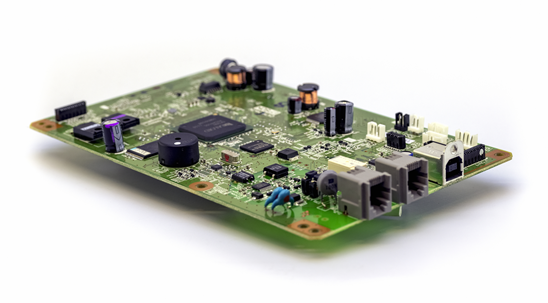Electronic router RF PCB
Product Category: RF PCB
Number of layers: 4
Size: 225.00mm*108.00mm
Surface treatment: FR-4
Board thickness: 0.2mm - 7mm
Aperture: 0.02mm
Line width: 0.003
Line spacing: 0.003
A router is a key device in network communication. It is mainly used to forward data packets between different networks or subnets. The router can determine the best transmission path according to the destination address of the data packet, thereby realizing the interconnection between networks.
Here are some of the main functions and features of the router:
1. Network interconnection: Routers can connect different networks, such as home networks, corporate intranets, and the Internet.
2. Packet forwarding: The router decides which interface or next-hop router to send the packet to based on the destination IP address of the packet.
3. Network Address Translation (NAT): Home routers usually have NAT function, allowing multiple devices to share the same public IP address.
4. Firewall: Routers usually have built-in firewall functions to protect the internal network from external attacks.
5. Dynamic Host Configuration Protocol (DHCP): The router can automatically assign IP addresses to connected devices.
6.Wireless Access Point: Wireless routers provide Wi-Fi access, allowing wireless devices to connect to the network.
7. Bandwidth Management: Advanced routers can control and optimize network traffic to ensure the performance of critical applications.
8. Virtual Private Network (VPN): Some routers support VPN, allowing remote users to securely access the internal network through an encrypted connection.
With the development of technology, the functions of routers are becoming more and more diversified, and the performance is also constantly improving to meet users' needs for high-speed, secure and intelligent networks.
A router is a key device in network communication. It is mainly used to forward data packets between different networks or subnets. The router can determine the best transmission path according to the destination address of the data packet, thereby realizing the interconnection between networks.
Here are some of the main functions and features of the router:
1. Network interconnection: Routers can connect different networks, such as home networks, corporate intranets, and the Internet.
2. Packet forwarding: The router decides which interface or next-hop router to send the packet to based on the destination IP address of the packet.
3. Network Address Translation (NAT): Home routers usually have NAT function, allowing multiple devices to share the same public IP address.
4. Firewall: Routers usually have built-in firewall functions to protect the internal network from external attacks.
5. Dynamic Host Configuration Protocol (DHCP): The router can automatically assign IP addresses to connected devices.
6.Wireless Access Point: Wireless routers provide Wi-Fi access, allowing wireless devices to connect to the network.
7. Bandwidth Management: Advanced routers can control and optimize network traffic to ensure the performance of critical applications.
8. Virtual Private Network (VPN): Some routers support VPN, allowing remote users to securely access the internal network through an encrypted connection.
With the development of technology, the functions of routers are becoming more and more diversified, and the performance is also constantly improving to meet users' needs for high-speed, secure and intelligent networks.
- Previous:RF PCB
- Next:Radar system RF PCB





